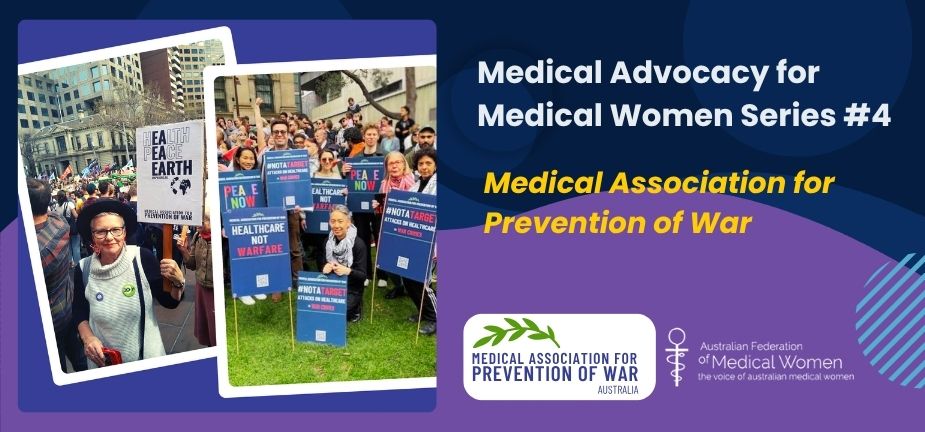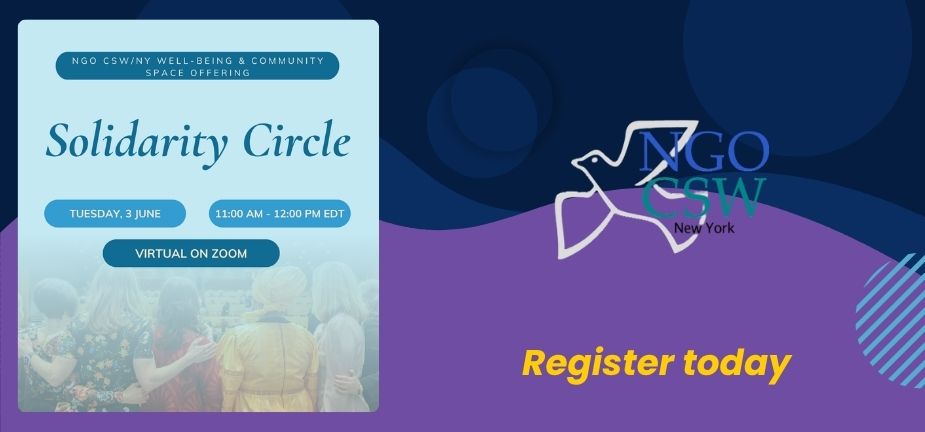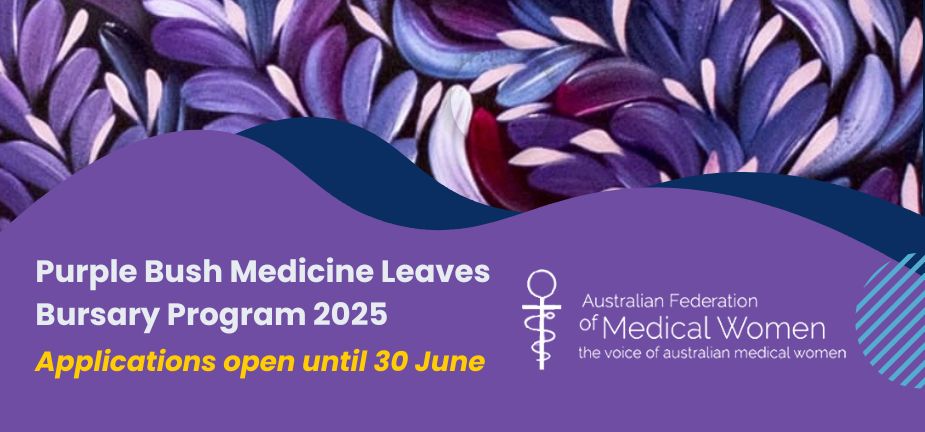In this article, published in InSight + and Neos Kosmos, AFMW President, Dr Magdalena Simonis shares how we need everyone to be recruited into this collective vision of a gender equal world that is free of bias.
THE official United Nations’ International Women’s Day theme for 2022 of “Gender equality today for a sustainable tomorrow” encourages us to imagine a gender-equal world, free of stereotypes and discrimination. It asks decision makers to pose the question to themselves and others, “why not a woman?”
International Women’s Day (IWD) was proposed more than 100 years ago by Clara Zetkin at an international conference of working women in Copenhagen in 1910.
Since 1975, the United Nations has formulated powerful themes for IWD in an effort to break down generations of enculturation which have created a subconscious bias in the majority of the population regarding the primary role of women, being centred around their biological capacity to birth children.
We are still needing to have this conversation around exactly these issues, as demonstrated by the disheartening statistics outlined in Australia’s latest Gender Equality Scorecard: there is still a 22.8% gender pay gap; men are twice as likely to be highly paid than women; women make up over 50% of the workforce but less than 20% of the CEOs; over 85% of Australian employers still pay men more than women on average; 22% of Australian boards are female-free.
The ongoing gender equality discussion reveals to us that culture is inherited and it takes a long time to change. Ingrained cultural bias and fear of change are what underlie systemic inequality and if we wait for culture to change, we are going to be waiting another 100 years.
Despite the progress made since the inception of IWD in 1911, the COVID-19 pandemic has increased the time expected to close the gender gap by a whole generation, from 99.5 years to 135.6 years, according to the World Economic Forum. This means that the health emergency and the related economic downturn have impacted women more severely than men, partially re-opening gaps that had already been closed, and the ripple effects are intersectional and intergenerational.
The gender equality workplace statistics for 2022 are concerning, with women earning 14% less per week than men, having 23.4% lower superannuation balances at retirement age than men, and with Australia ranking lower in the World Economic Forum’s Gender Index now than we did in 2006.
In order to break the bias that locks women and minority groups into lower socio-economic strata, systemic culture change is needed, and this is best demonstrated at the leadership level. An organisation might have good gender diversity in terms of employee numbers yet have predominantly male leadership. The Women On Boards Boardroom Gender Diversity Index was launched on IWD 2010 and provides data on female representation on boards in Australian organisations, sector by sector. You can see how our medical colleges rate here (the Australasian College of Dermatologists tops the list with 57.1% of their board being female), and universities rate here (University of South Australia best with 68.75%, Charles Darwin University is bottom of the list with 15.38%).
Organisations need to conduct internal gender equity reviews with the goal of achieving gender equal representation through implementation of a gender equality strategy. These reviews must be honest and transparent. We know that change isn’t easy and that it doesn’t happen overnight, nor is this about disabling or destabilising existing leaders. It requires an achievable and smooth transition plan which leaders commit to, by making the decision for a new vision bringing the people within the organisation on the journey together. Subconscious conversation and resistance cannot be controlled, but demonstrating behaviour change from the top by conducting work place gender equity company reviews and reporting to the Workplace Gender Equality Agency (WGEA) annually, establishing gender equity working groups, and undertaking gender equity training is a good starting point.
Some very good models exist such as the 2003, Norway law on 40:40:20 for company boards. The 40:40:20 ratio refers to 40% men, 40% women, 20% of any gender and aims for diversity of gender in workplace leadership, be it senior leadership teams or on boards. A good example more locally of a similar effort being made, is demonstrated by the Australian Medical Association, which has developed a Gender Diversity and Inclusion Plan 2020–2022 and is taking strides towards breaking the bias.
A commitment to creating equal opportunities and outcomes regardless of gender also includes paid parental leave for primary and secondary carers, flexible working options that enable people to have work–life balance options suitable to their personal and professional circumstances, and annual reporting to the WGEA, providing transparency and public commitment to equal pay for equal roles.
Interestingly, having women in key leadership positions results in higher company performance outcomes and increased productivity, which translate to greater profitability. Organisations with balanced representation of women in executive leadership roles have pay gaps half the size of those with the least representation of women in leadership. More interesting facts around the benefits of having women in leadership are available here.
As a gender equity and health equity advocate, I presented a talk entitled “Gender equity: I’m not biased so what’s the big issue?” in 2021 around IWD, and expounded on the importance of diversity and the significance of boards representing the wider community and how this also constitutes merit. Diversity provides the voice and perspective of the very people we serve. These qualities don’t override the importance of leadership experience, as leadership can be taught through mentoring, training, and being co-opted onto committees and boards. Leadership training programs are numerous and the 10-step guide for getting more women into leadership from Women in Leadership Lessons from Australian Companies is outlined below:
- Build a strong case for change.
- Role-model commitment to diversity, including with business partners.
- Redesign roles, enable flexible work, normalise uptake across levels and genders.
- Actively sponsor rising women.
- Set up a clear diversity aspiration backed up by accountability.
- Support talent through life transitions.
- Ensure the infrastructure is available to support a more inclusive flexible workplace – think about childcare facilities.
- Challenge traditional views of merit in recruitment and evaluation.
- Invest in frontline leader capabilities to drive cultural change.
- Develop rising women and ensure experience in key roles.
As with any movement, there is power in numbers and we need everyone to be recruited into this collective vision of a gender equal world that is free of bias and discrimination.
Also posted at:
https://insightplus.mja.com.au/2022/9/international-womens-day-why-we-still-need-these-conversations/
https://neoskosmos.com/en/2022/03/15/dialogue/opinion/international-womens-day-why-we-still-need-these-conversations/
Associate Professor Magdalena Simonis AM is a Past President of the AFMW (2020-2023), former President of VMWS (2013 & 2017-2020) and current AFMW National Coordinator (2024-2026). She is a full time clinician who also holds positions on several not for profit organisations, driven by her passion for bridging gaps across the health sector. She is a leading women’s health expert, keynote speaker, climate change and gender equity advocate and government advisor. Magda is member of The Australian Health Team contributing monthly articles.
Magdalena was awarded a lifetime membership of the RACGP for her contributions which include past chair of Women in General Practice, longstanding contribution to the RACGP Expert Committee Quality Care, the RACGP eHealth Expert Committee. She is regularly invited to comment on primary care research though mainstream and medical media and contributes articles on various health issues through newsGP and other publications.
Magdalena has represented the RACGP at senate enquiries and has worked on several National Health Framework reviews. She is author of the RACGP Guide on Female Genital Cosmetic Surgery and co-reviewer of the RACGP Red Book Women’s Health Chapter, and reviewer of the RACGP White book
Both an RACGP examiner and University examiner, she undertakes general practice research and is a GP Educator with the Safer Families Centre of Research Excellence, which develops education tools to assist the primary care sector identify, respond to and manage family violence . Roles outside of RACGP include the Strategy and Policy Committee for Breast Cancer Network Australia, Board Director of the Melbourne University Teaching Health Clinics and the elected GP representative to the AMA Federal Council. In 2022. she was award the AMA (Vic) Patrick Pritzwald-Steggman Award 2022, which celebrates a doctor who has made an exceptional contribution to the wellbeing of their colleagues and the community and was listed as Women’s Agenda 2022 finalist for Emerging Leader in Health.
Magdalena has presented at the United Nations as part of the Australian Assembly and was appointed the Australian representative to the World Health Organisation, World Assembly on COVID 19, by the Medical Women’s International Association (MWIA) in 2021. In 2023, A/Professor Simonis was included on the King’s COVID-19 Champion’s list and was also awarded a Member (AM) in the General Division for significant service to medicine through a range of roles and to women’s health.










